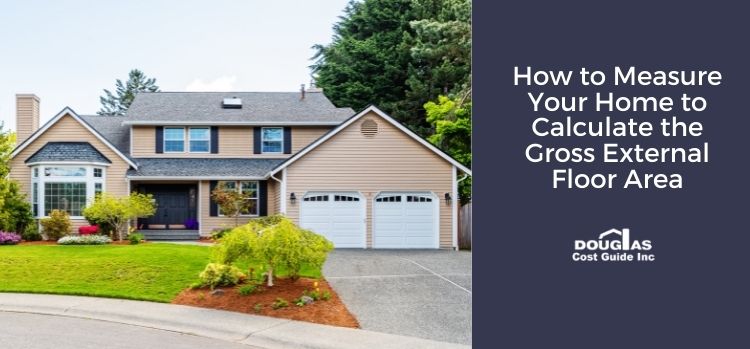Estimating the value of your home and the costs associated with replacement or renovation can be challenging. One of the first steps is correctly calculating the gross external floor area of your home. Once calculated, you can use the gross external floor area to determine replacements costs with the Douglas Residential Cost Guide. Eliminate the guesswork involved by accurately calculating the gross external floor area with these tips.
What is the Gross External Floor Area?
The Gross External Floor Area (GEA) refers to the total area of a home as calculated from measurements of the exterior dimensions. It’s also sometimes referred to as a home’s square footage / floor area.
Calculating this number and ensuring its accuracy is important for numerous reasons:
- The size of your home significantly affects its potential value.
- Miscalculating the area can lead to undervaluing or overvaluing your home.
- GEA is used for insurance purposes to secure the proper coverage for your home, or to estimate the cost of replacement or renovation.
How to Calculate the GEA of Your Home?
Measuring a Typical House
Calculating the gross external floor area of a typical rectangular or L-shaped house is relatively simple: multiply the length of the area by the width. For an L-shaped home, divide the short and long portions of the “L” into sections, calculate their area separately, and then add the two sums together for the Gross External Floor Area.
Measuring Irregularly Shaped Houses
The calculation becomes more challenging with homes that are an irregular shape. You’ll need to gather tools such as a tape measure, calculator, and a notepad with a pen to write down your calculations.
Measure each section of the external walls as accurately as possible. You may find it helpful to create a rough sketch of your home’s layout as a guide. Divide the floor plan into sections, taking care not to overlap them, and calculate the area of each section separately. Once you have finished, add all the numbers together to arrive at your home’s GEA.
Other Methods to Calculate Gross External Floor Area
There are a couple of ways to potentially determine the GEA of your home without having to physically measure it. You can check the property records held by your city or county, which are sometimes available online. Unfortunately, for a variety of reasons, these records are not always up-to-date or accurate, but they can be a useful starting point.
Get Accurate Estimates with Douglas Residential Cost Guide
Available in a print and an online edition, the Douglas Residential Cost Guide is your industry-tested tool for precise, accurate estimates for costs associated with rebuilding your home. It’s a trusted industry guide used by homeowners and professionals alike to estimate a wide range of costs associated with your home. Contact us today and learn why we’re trusted by professionals across Canada.

